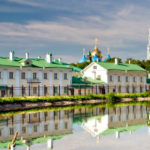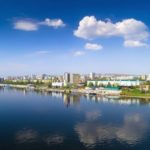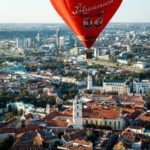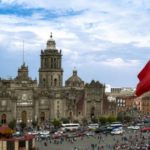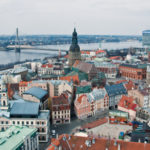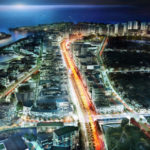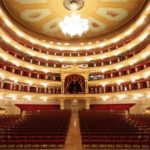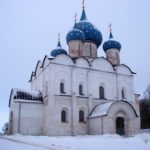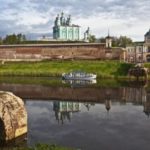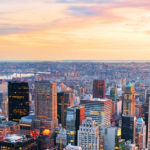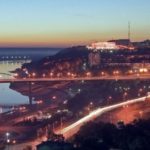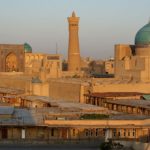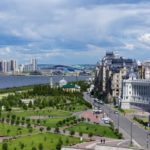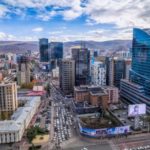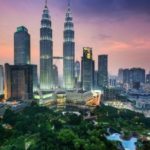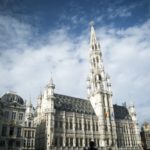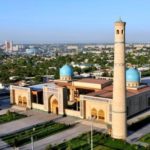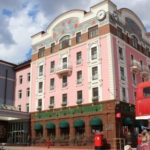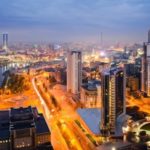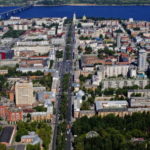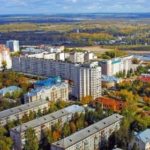Interesting facts about Moscow
 The ancient city of Moscow, the capital of Russia, is an incredibly interesting place. The historical center here is adjacent to the modern skyscrapers, and the Soviet-era panel five-story buildings can stand next to glittering glass and steel business center. This city has become home to many millions of inhabitants, and it is rightfully ranked among the most interesting cities in the world.
The ancient city of Moscow, the capital of Russia, is an incredibly interesting place. The historical center here is adjacent to the modern skyscrapers, and the Soviet-era panel five-story buildings can stand next to glittering glass and steel business center. This city has become home to many millions of inhabitants, and it is rightfully ranked among the most interesting cities in the world.
More people live here than in all the Baltic countries combined.
In 1812, during a fire set up when Napoleon’s army approached, about 80% of all buildings burned down in Moscow.
From 1712 to 1918 she was deprived of the status of the capital, since this role was performed by St. Petersburg.
The exact date of the founding of Moscow is unknown, therefore, the year of the appearance of this city is 1147 – it was then that it was first mentioned in the chronicle.
The name of the city was in honor of the river of the same name flowing through it.
Long before the founding of Moscow, ancient settlements of Finno-Ugric tribes were located on its territory.
Many flowing through the capital of the river are cleaned under the ground. For example, Yauza, Skhodnya, Khodynka, Neglinnaya and others.
In Moscow parks are wild moose.
Daily public transport in Moscow carries about 12 million people. This is roughly equal to the population of the entire city, but many come here to work from the suburbs.
In 1904, there was observed a rare natural phenomenon in these parts – a tornado. It destroyed many houses and literally sucked the water from the Moscow River, exposing its bottom.
The two most famous diamonds in the world, “Shah” and “Orlov”, are kept in the Almakhny Fund of the capital. The “Shah” was donated to Russia by the Iranian government after an incident with the defeat of the Russian embassy in Tehran, when, among others, a diplomat and writer Griboedov died.
The Ostankino TV Tower is the highest in Europe. It is among the ten highest buildings in the world.
Until the 16th century, even the richest houses in Moscow had no glass. Instead, they used mica plates or fish bubbles.
Moscow’s Lenin Library is the largest in Europe.
The oldest trees in this city are the ancient oaks in Kolomenskoye Park. im more than seven centuries.
The famous stars on the Kremlin towers were installed only in 1937, to the 20th anniversary of the revolution.
Every minute Moscow enterprises and cars emit about 2 tons of polluting harmful substances into the atmosphere.
The world’s largest clock, barometer and thermometer are located right here. They can be seen on the building of Moscow State University.
The actual population of Moscow, according to various estimates, is about 20% higher than the official one, because several million illegal migrants live and work here.
The total length of all the Moscow streets is a little less than 4.5 thousand kilometers.
River transport from Moscow you can reach the Arctic Ocean.
There are as many as 5 airports.
The Moscow metro used to be built in such a way that, if necessary, to serve as bomb shelters, but the new lines and stations lie shallowly from the surface, or even go outside.
The stations of the Moscow metro, built during the USSR, are deservedly considered the most beautiful in the world.
The first electric lamps in Moscow were lighted in 1856.
There are more than 500 libraries in the capital. By their number, Moscow is the absolute champion.
There are 72 theaters, 78 museums and 31 concert hall. Foreign tourists here definitely never get bored.
The area of Moscow is approximately equal to the area of New York.
The population density here is very high. It is comparable to that in Manila, the Philippine capital.
In terms of population, the Russian capital ranks first in Europe.
This is a multinational city. In total, representatives of several dozen nations live here in a noticeable number.
Moscow received the nickname “White Stone” because the Kremlin was indeed regularly painted white. Stalin ordered to repaint it red.
Moscow has passed for a million people living in it at the end of the 19th century.
The Kremlin located here is the largest active fortress in Europe.
The Kremlin chimes are the oldest watches in Russia, they are about 5 centuries old. Their weight reaches 25 tons.
